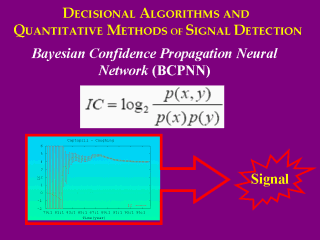 |
When there are
several reports of adverse reactions to particular drug, causality
assessment may lead to signal generation - a notice of the need for
increased awareness of a possible safety problem communicated to countries.
Initially signal detection was done by qualitative evaluation and expert
review but as the number of reports increased this process became exhaustive
and less effective, leading to the development of quantitative tools like
Bayesian propagation neural network developed by the UMC. Given the high
sensitivity of algorithms, serial testing combination with data mining
methodologies for signal detection like BCPNN method [2] might increase
causality assessment specificity, deserving further investigation. |
